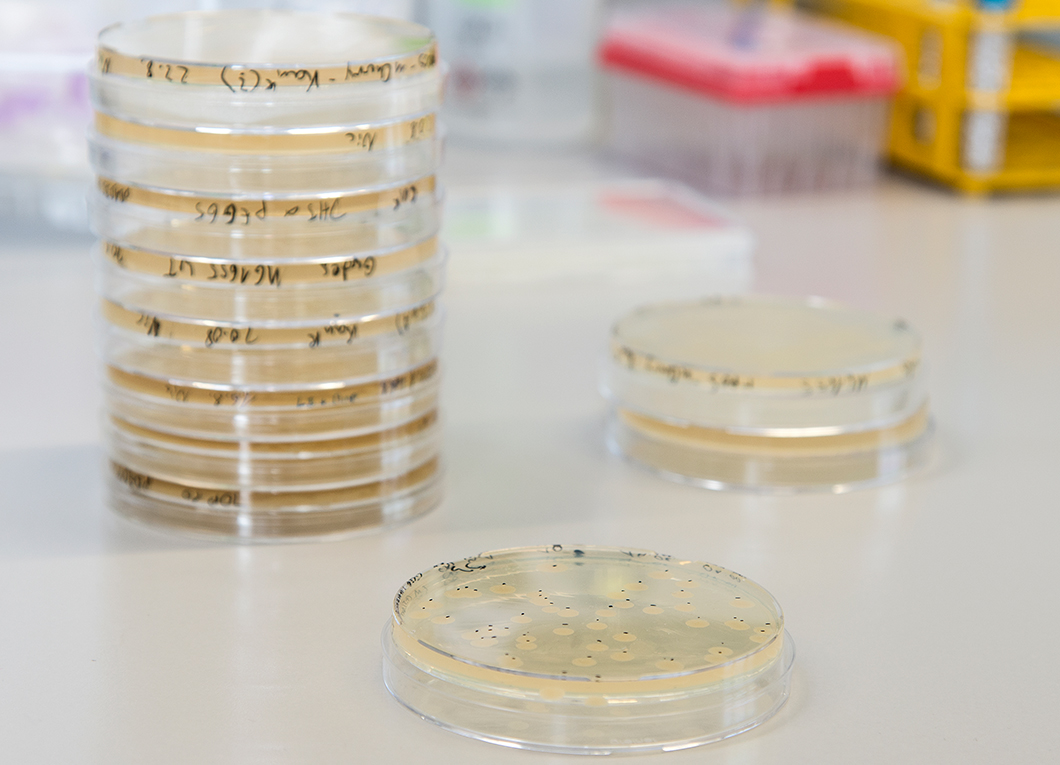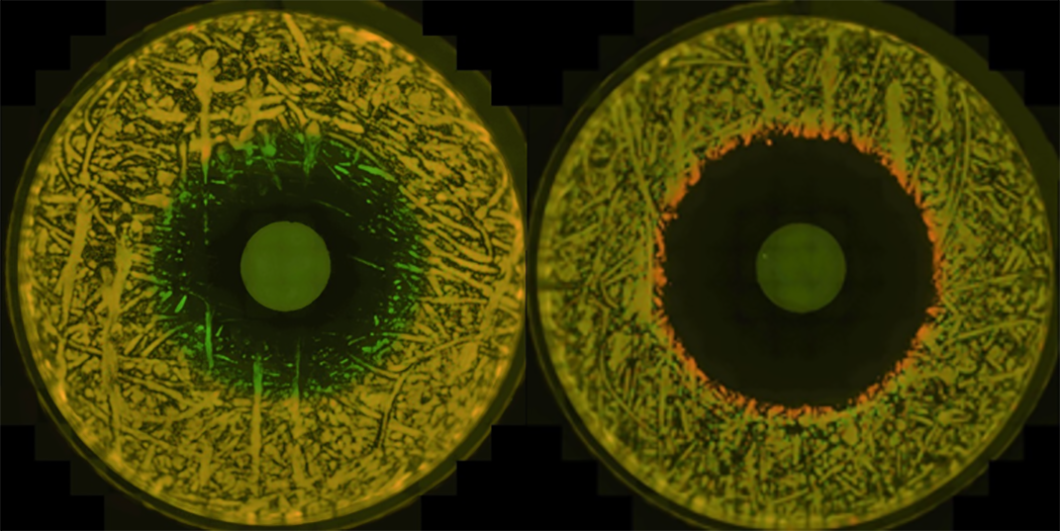
Bacterial cultures in petri dishes
Source: BAM
Objective
Identify antimicrobial-antibiotic combinations that select for and against antibiotic resistance and determine population dynamics of resistant strains in biofilms.
Because of the combinatorial therapy approach, bacteria causing biofilm infections are exposed to different drugs during biofilm formation. These drugs are coated on the implanted biomedical surface and are systemically administered. In general, biofilms formed by resistant bacteria are harder to treat than biofilms formed by non-resistant bacteria. However, it has been shown that exposing populations of antibiotic resistant and non-resistant bacteria to combinations of toxic compounds can lead to the preferential survival of either the resistant or the non-resistant sub-populations.
First, the BAM team identified antimicrobial-antibiotic combinations that potentiate their combined efficacy against microbes or those combinations that suppress each other’s effects (Pietsch et al. 2020, Frontiers in Microbiology https://www.frontiersin.org/articles/10.3389/fmicb.2020.615618/full). In a next step, the researchers exposed those combinations to populations in which antibiotic-resistant and sensitive strains are mixed (see picture). Using this approach, the team identified antimicrobial-antibiotic combinations that select either for or against antibiotic resistance. This knowledge provides the basis to choose the best combination during treatment in order to prevent infections with antibiotic resistant bacteria.

Two strains of the pathogenic bacterium Pseudomonas aeruginosa growing on a (agar) surface that contains antibiotics
Source: BAM, Biodeterioration and Reference Organisms Division
Caption: Two strains of the pathogenic bacterium Pseudomonas aeruginosa growing on a (agar) surface that contains antibiotics. The red strain is the sensitive wildtype and the green strain is resistant to the antibiotic. Yellow areas are covered with both strains. The disc (d=5mm) in the middle of the surface contains an antimicrobial substance (i.e. a biocide). The left image shows that the combined exposure to biocides and antibiotics selects for the resistant strain (green ring), while the combination on the right selects for the sensitive strain (red ring). Such combinations are preferred above those that select for resistance, because they can inhibit the proliferation of resistant strains.


